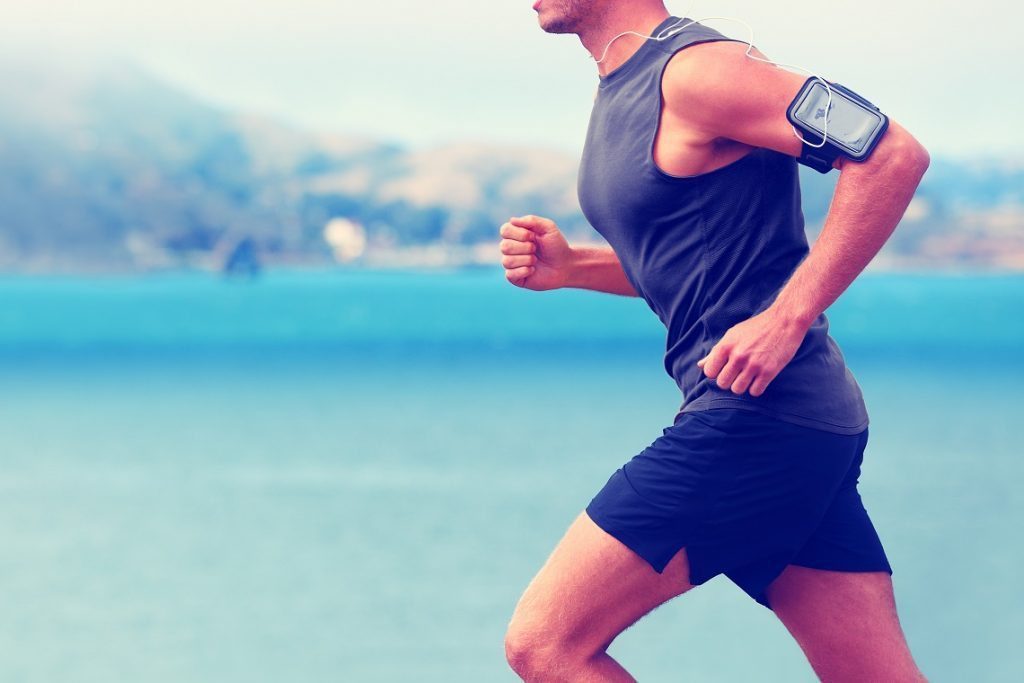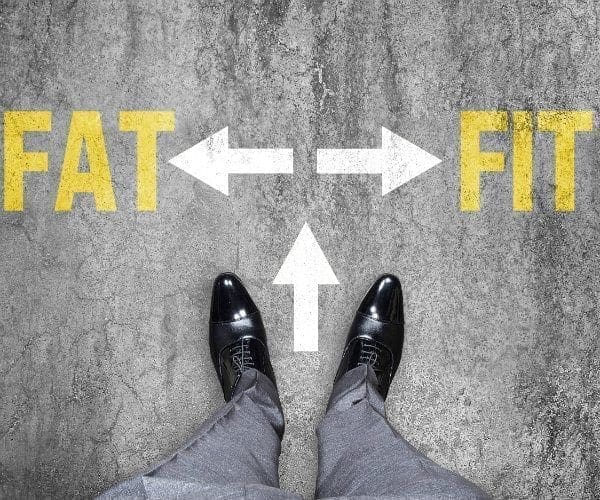
by Dr Alex Jimenez DC, APRN, FNP-BC, CFMP, IFMCP | Fitness, Wellness
Life is busy. It can feel impossible to move toward your dreams. If you have a full-time job and kids, it�s even harder.
How do you move forward?
If you don�t purposefully carve time out every day to progress and improve?�?without question, your time will get lost in the vacuum of our increasingly crowded lives. Before you know it, you�ll be old and withered?�?wondering where all that time went.
As Professor Harold Hill has said?�?�You pile up enough tomorrows, and you�ll find you are left with nothing but a lot of empty yesterdays.�
Rethinking Your Life &�Getting Out Of Survival�Mode
This article is intended to challenge you to rethink your entire approach to life. The purpose is to help you simplify and get back to the fundamentals.
Sadly, most people�s lives are filled to the brim with the nonessential and trivial. They don�t have time to build toward anything meaningful.
They are in survival mode. Are you in survival mode?
Like Bilbo, most of us are like butter scraped over too much bread. Unfortunately, the bread is not even our own, but someone else�s. Very few have taken the time to take their lives into their own hands.
It was social and cultural to live our lives on other people�s terms just one generation ago. And many millennials are perpetuating this process simply because it�s the only worldview we�ve been taught.

However, there is a growing collective-consciousness that with a lot of work and intention?�?you can live every moment of your life on your own terms.
You are the designer of your destiny.
You are responsible.
You get to decide. You must decide?�?because if you don�t, someone else will. Indecision is a bad decision.
With this short morning routine, your life will quickly change.
It may seem like a long list. But in short, it�s really quite simple:
- Wake up
- Get in the zone
- Get moving
- Put the right food in your body
- Get ready
- Get inspired
- Get perspective
- Do something to move you forward
Let�s begin:
1. Get A Healthy 7+ Hours of�Sleep
Let�s face it?�?Sleep is just as important as eating and drinking water. Despite this, millions of people do not sleep enough and experience insane problems as a result.
The National Sleep Foundation (NSF) conducted surveys revealing that at least 40 million Americans suffer from over 70 different sleep disorders. Not only that, 60 percent of adults, and 69 percent of children, experience one or more sleep problems a few nights or more during a week.
In addition, more than 40 percent of adults experience daytime sleepiness severe enough to interfere with their daily activities at least a few days each month?�?with 20 percent reporting problem sleepiness a few days a week or more.
On the flipside, getting a healthy amount of sleep is linked to:
- Increased memory
- Longer life
- Decreased inflammation
- Increased creativity
- Increased attention and focus
- Decreased fat and increased muscle mass with exercise
- Lower stress
- Decreased dependence on stimulants like caffeine
- Decreased risk of getting into accidents
- Decreased risk of depression
- And tons more� google it.
The rest of this blog post is worthless if you don�t make sleep a priority. Who cares if you wake up at 5 o�clock A.M. if you went to bed three hours earlier?
You won�t last long.
You may use stimulants to compensate, but that isn�t sustainable. In the long-run, your health will fall apart. The goal needs to be long-term sustainability.
2. Prayer & Meditation To Facilitate Clarity & Abundance
After waking from a healthy and restful sleep session, prayer and meditation are crucial for orienting yourself toward the positive. What you focus on expands.
Prayer and meditation facilitate intense gratitude for all that you have. Gratitude is having an abundance mindset. When you think abundantly, the world is your oyster. There is limitless opportunity and possibility for you.
People are magnets. When you�re grateful for what you have, you will attract more of the positive and good. Gratitude is contagious.
Gratitude may be the most important key to success. It has been called the mother of all virtues.
If you start every morning putting yourself in a space of gratitude and clarity, you will attract the best the world has to offer, and not get distracted.
3. Hard Physical�Activity
Despite endless evidence of the need for exercise, only one-third of American men and women between the ages of 25 to 64 years engage in regular physical activity according to the Center for Disease Control�s National Health Interview Survey.
If you want to be among the healthy, happy, and productive people in the world, get in the habit of regular exercise. Many people go immediately to the gym to get their body moving. I have lately found that doing yard work in the wee hours of the morning generates an intense inflow of inspiration and clarity.

Whatever your preference, get your body moving.
Exercise has been found to decrease your chance of depression, anxiety, and stress. It is also related to higher success in your career.
If you don�t care about your body, every other aspect of your life will suffer. Humans are holistic beings.
4. Consume 30 Grams Of�Protein
Donald Layman, professor emeritus of nutrition at the University of Illinois, recommends consuming at least 30 grams of protein for breakfast. Similarly, Tim Ferriss, in his book, The 4-Hour Body, also recommends 30 grams of protein 30 minutes after waking up.
According to Tim, his father did this and lost 19 pounds in one month.
Protein-rich foods keep you full longer than other foods because they take longer to leave the stomach. Also, protein keeps blood-sugar levels steady, which prevents spikes in hunger.
Eating protein first decreases your white carbohydrate cravings. These are the types of carbs that get you fat. Think bagels, toast, and donuts.
Tim makes four recommendations for getting adequate protein in the morning:
- Eat at least 40% of your breakfast calories as protein
- Do it with two or three whole eggs (each egg has about 6g protein)
- If you don�t like eggs, use something like turkey bacon, organic pork bacon or sausage, or cottage cheese
- Or, you could always do a protein shake with water
For people who avoid dairy, meat, and eggs, there are several plant-based proteins. Legumes, greens, nuts, and seeds all are rich in protein.
5. Take A Cold�Shower
Tony Robbins starts every morning by jumping into a 57-degree Fahrenheit swimming pool.
Why would he do such a thing?
Cold water immersion radically facilitates physical and mental wellness.When practiced regularly, it provides long-lasting changes to your body�s immune, lymphatic, circulatory and digestive systems that improve the quality of your life. It can also increase weight-loss because it boosts your metabolism.
A 2007 research study found that taking cold showers routinely can help treat depression symptoms often more effectively than prescription medications. That�s because cold water triggers a wave of mood-boosting neurochemicals which make you feel happy.
There is of course, an initial fear of stepping into a cold shower. Without a doubt, if you�ve tried this before, you have found yourself standing outside the shower dreading the thought of going in.
You may have even talked yourself out of it and said, �Maybe tomorrow.� And turned the hot water handle before getting in.
Or, maybe you jumped in but quickly turned the hot water on?
What has helped me is thinking about it like a swimming pool. It�s a slow painful death to get into a cold pool slowly. You just need to jump in. After 20 seconds, you�re fine.
It�s the same way with taking a cold shower. You get in, you heart starts beating like crazy. Then, after like 20 seconds, you feel fine.
To me, it increases my willpower and boosts my creativity and inspiration. While standing with the cold water hitting my back, I practice slowing my breathing and calming down. After I�ve chilled out, I feel super happy and inspired. Lots of ideas start flowing and I become way motivated to achieve my goals.
Plus, it�s healthy to do something in the morning that kind of freaks you out! Get�s you feeling alive and sets the tone for living outside your comfort zone!
6. Listen To/Read Uplifting Content
Ordinary people seek entertainment. Extraordinary people seek education and learning. It is common for the world�s most successful people to read at least one book per week. They are constantly learning.
I can easily get through one audiobook per week by just listening during my commute to school and while walking on campus.
Taking even 15�30 minutes every morning to read uplifting and instructive information changes you. It puts you in the zone to perform at your highest.
Over a long enough period of time, you will have read hundreds of books. You�ll be knowledgeable on several topics. You�ll think and see the world differently. You�ll be able to make more connections between different topics.
7. Review Your Life�Vision
Your goals should be written down?�?short term and long term. Taking just a few minutes to read your life vision puts your day into perspective.
If you read your long term goals every day you will think about them every day. If you think about them every day, and spend your days working toward them, they�ll manifest.
Achieving goals is a science. There�s no confusion or ambiguity to it. If you follow a simple pattern, you can accomplish all of your goals, no matter how big they are.
A fundamental aspect of that is writing them down and reviewing them every single day.
8. Do At Least One Thing Towards Long-Term Goals
Willpower is like a muscle that depletes when it is exercised. Similarly, our ability to make high quality decisions becomes fatigued over time. The more decisions you make, the lower quality they become?�?the weaker your willpower.
Consequently, you need to do the hard stuff first thing in the morning. The important stuff.
If you don�t, it simply will not get done. By the end of your day, you�ll be exhausted. You�ll be fried. There will be a million reasons to just start tomorrow. And you will start tomorrow?�?which is never.
So your mantra becomes: The worst comes first. Do that thing you�ve been needing to do. Then do it again tomorrow.
If you take just one step toward you big goals every day, you�ll realize those goals weren�t really far away.
Conclusion
After you�ve done this, no matter what you have for the rest of your day, you�ll have done the important stuff first. You�ll have put yourself in a place to succeed. You�ll have inched toward your dreams.
Because you�ll have done all these things, you�ll show up better in life. You�ll be better at your job. You�ll be better in your relationships. You�ll be happier. You�ll be more confident. You�ll be more bold and daring. You�ll have more clarity and vision.
Your life will shortly change.
You can�t have mornings like this consistently without waking up to all that is incongruent in your life. Those things you despise will meet their demise. They�ll disappear and never return.
You�ll quickly find you�re doing the work you�re passionate about.
Your relationships will be passionate, meaningful, deep, and fun!
You will have freedom and abundance.
The world, and the universe, will respond to you in beautiful ways.

Call Today!
Source:
Thrive Global
Comments

by Dr Alex Jimenez DC, APRN, FNP-BC, CFMP, IFMCP | Diets, Fitness
One in three Americans is overweight and another third are obese, according to the Centers for Disease Control and Prevention. But while carrying too many extra pounds can increase your risk for heart disease, diabetes, and some cancers, health experts say a little bit of flab may actually be healthy.
But there is a kind of “Goldilocks Effect” — not too much, not too little — when it comes to body fat.
“Researchers have concluded that fat is actually a vital organ that releases hormones and sends special signals to the brain,” notes Dr. Holly Lucille, ND, RN. “Fat is an important macro nutrient and like any other macro nutrient, the quality makes a difference. Having the right kind of fat on your body is both protective and important.”
Jeffrey Friedman, a molecular biologist at Rockefeller University was among the first scientists back in the 1980s to discover that there was more to fat than merely storing calories. In his experiments with mice, he found that fat produces a hormone called leptin which is released into the bloodstream and binds with the areas in our brain that are responsible for appetite.
His lab’s obese mice had a genetic defect in their fat that prevented the manufacture of leptin which gave them the signal to stop eating. Humans with the same genetic defect can eventually eat themselves into obesity and premature death.
So, losing weight becomes a double-edged sword. When we lose fat, we lower our levels levels of leptin, the appetite off switch, and we become hungrier than before.
Leptin also affects our muscles and thyroid hormones so that lower levels of leptin slow down our metabolism. This combined effect drives us to regain weight. It may also explain why extreme dieters who lose vast amounts of weight in short periods of time nearly always gain it all back — and then some, scientists say.
Scientists also know that fat affects the size of our brains. People who are genetically leptin-deficient have smaller brain volume in some areas as do patients who are suffering from eating disorders such as anorexia which leave them malnourished. Leptin is also helpful in healing wounds and strengthens our immune system by activating T-cells.
“What’s important is the quantity and quality of your stored fat,” Lucille tells Newsmax Health. “The ‘good’ type of fat is called subcutaneous and is found directly under our skin in places such as our abdomen thighs, buttocks, and arms.”
Subcutaneous fat is easy to grab with your hand and tends to shift as the body changes position.
The so-called “bad” type of fat is visceral fat which is stored under the stomach wall, nestled against our internal organs. This type of fat can become inflamed and lead to diabetes and heart disease. It tends to be firmer and dense.
But experts warn that excess body fat of either kind is unlikely to be health-promoting. It’s important to keep fat levels at their optimal levels which can vary according to age and sex.
In general, women with more than 30 percent body fat are considered to be overweight and for men, the threshold is more than 25 percent.
Dr. Cate Shanahan, author of “Deep Nutrition: Why Your Genes Need Traditional Food,” tells Newsmax Health that women, especially need a body composition of at least 10-12 percent fat in order to produce enough estrogen to cycle regularly and to maintain normal libido.
And as we age, a little more fat can enhance our looks.
“As we age we lose that facial body fat and our hormones simultaneously fall,’ she says. “Body fat helps support normal estrogen levels and therefore contributes to normal bone density — a critical factor in healthy aging after the age of 65.
“But that minimum percentage must be subcutaneous fat. When the visceral fat reaches more than 2 percent of our body composition it can lead to poor insulin sensitivity and potentially the beginnings of diabetes.”
The good news is that the “good” fat can fight the “bad” fat. By making a substance called adiponectin, subcutaneous fat helps take circulating fats out of your veins and into the subcutaneous tissues where they belong.
This hormone also reduces visceral fat. Exercise helps release adiponectin which is why sumo wrestlers can be both fat and fit. They exercise seven hours daily which keeps their visceral fat under control.
Experts say we should embrace the new science of fat, and Shanahan quotes an old French proverb that praises fat more poetically: “After a certain age a woman must choose between guarding her figure at the price of a hollow face.”
“I think the take away message of the new research is that we must keep a healthy level of fat to reduce our risk of disease while maintaining optimal body function,” notes Shanahan. “But don’t rationalize and run with the theory that eating bad fats are good for your health. You still need to choose your fats wisely and keep them within healthy levels.”
by Dr Alex Jimenez DC, APRN, FNP-BC, CFMP, IFMCP | Crossfit, PUSH-as-Rx
Dr. Jimenez presents a glimpse of Crossfit as is spans across America.
ABOUT two decades ago in California, CrossFit was registered as a trademark by the founder Greg Glassman.
According to nerdfitness.com, CrossFit is a training philosophy that coaches people of all shapes and sizes to improve their physical wellbeing and cardiovascular fitness in a hard-core yet accepting and encouraging environment.
CrossFit workouts change to contain variety to keep its members on its toes. The routine consists of functional movements that aim to increase individual work capacity and is applicable to other sports activities.
More than 324,307 people participated from 175 countries last year. The open game has five workouts over five weeks, which is posted online for the participants to follow.
Every week for the five weeks of the open game, the workout of the day (WOD) is released on Youtube and the official CrossFit website.
CrossFit in Fiji
The Suva Boxing and Fitness gym introduced CrossFit in Fiji last year and entered the open games with only five members.
Napoleon Taumoepeau is the only qualified CrossFit coach in Fiji. He was named the fittest person in Fiji by CrossFit Forging Elite Fitness. CrossFit 679 is Fiji’s only CrossFit affiliate. This year there were 20 members in the CrossFit open game. March 26 was the last of the five workouts at the Suva Boxing and Fitness gym.
CrossFit 679
Determination was on the faces of the participants as they pushed to finish the final WOD of the open games at the Suva Boxing and Fitness gym.
The WOD includes a wide range of physical exercises such as thrusters, squats, pull-ups, sumo deadlift, high pulls and more. CrossFit 679 is a place that has no boundaries and it brings the best out of an individual.
The coach encourages the participants to work hard and never puts one down.
“It may seem intimidating but I have trained many people who have never done CrossFit. Nine out of 10 of them are intimidated but the truth is that CrossFit was designed for all levels of fitness. We, as coaches, are trained to teach someone with little or no knowledge about CrossFit and help them on their way through a new fitness journey,” said Taumoepeau, coach for CrossFit 679.
After every three months, the CrossFit 679 affiliate takes in members who are interested on a journey of learning about CrossFit and the fundamental movements of CrossFit. An introduction seminar is the first step to welcome the participants of CrossFit 679.
To bring the very best during your training for the CrossFit games, proper diet and plenty of water is key.
“When and what you eat plays a big role in how your training will go. We help our CrossFit members to the best of our knowledge to maximise their workouts and it usually starts with diet,” the coach shared.
For the 679 CrossFitter, the CrossFit 679 is a great place to endure the pain and doing so with friendly and motivating people.
“You die but in the best way then cannot wait to die again,” Krystelle Lavaki, one of the participants shared.
CrossFitters diet
CrossFitters normally go on a Paleo diet or a zone diet.
According to Crossfit Impulse, the zone diet isn’t about eating “low-carb” or “high-protein” or anything like that. It’s a diet balanced in protein (lean, natural meats are preferred), carbs (mostly low glycemic-load fruits and vegetables) and fat (one of the most important macronutrients).
With the right balance of protein, carbohydrates and fats, you can control three major hormones generated by the human diet � insulin, glucagon and eicosanoids. The Paleo diet is the healthiest way you can eat because it is the only nutritional approach that works with your genetics to help you stay lean, strong and energetic.

by Dr Alex Jimenez DC, APRN, FNP-BC, CFMP, IFMCP | Fitness, PUSH-as-Rx
Posted on April 14, 2017, 6 a.m. in Diabetes Exercise
Research shows that HIIT quickly improves glucose metabolism and insulin sensitivity in people with type 2 diabetes.
Research published in the Scandinavian Journal of Medicine & Science in Sports shows that high-intensity interval training (HIIT) improves glucose metabolism and insulin sensitivity in people with type 2 diabetes.
The team, from the University of Turku in Finland, was led by Kari Kalliokoski, a senior research fellow.� Jarna Hannukainen served as project manager. In the study, researchers examined the effects of different types of exercise on the body�s ability to process glucose. Twenty-six participants in their 40s and 50s were selected for the two-week trial. One group already had healthy glucose metabolism. The second group included those with type 2 diabetes or pre-diabetes.
In each group, half of the participants were assigned HIIT exercise routines. The other half were assigned moderate intensity exercises. Six training sessions were completed during the two-week period.
At the beginning and end of the study, blood tests were completed that tested participants� glucose and fatty acid uptake. These are measures of how well the body absorbs and processes sugar and fats in the blood stream.
Research Results
In the final data analysis, all participants showed improvement in insulin sensitivity and the ability to metabolize glucose. However, those who completed HIIT workouts displayed a greater improvement than the moderate intensity participants. Researchers point out that any exercise can effectively reduce blood sugar and insulin sensitivity, but HIIT routines produce results more quickly.
HIIT involves performing intense anaerobic activities for a short period, usually 30 seconds. These intense spurts of activity are followed by several minutes of less intense recovery exercises.
Effects on Treatment of Diabetic Conditions
Previous studies have proven a link between regular exercise and improved glucose levels and metabolism. Choosing between HIIT or more moderate activities is a matter of personal preference. It is most important that the workouts be done regularly.
The study�s results support the idea that exercise is a simple, economical, and effective way to treat and prevent diabetic conditions. It also increases patient safety for those with co-occurring conditions, like cardiovascular disease. Exercise reduces the need for medication, which translates into less chance of dangerous drug interactions. Exercise also alleviates some of the less serious physical effects of diabetes, like mental fog and pain in the joints or muscles.
Researchers caution patients to check with their primary physician before starting an exercise routine. The research shows, exercise can lower blood sugar quickly. A person who is taking prescribed medication may need to have their dosage adjusted.
Tanja J. Sj�ros, Marja A. Heiskanen, Kumail K. Motiani, Eliisa L�yttyniemi, Jari-Joonas Eskelinen, Kirsi A. Virtanen, Nina J. Savisto, Olof Solin, Jarna C. Hannukainen, Kari K. Kalliokoski. Increased insulin-stimulated glucose uptake in both leg and arm muscles after sprint interval and moderate intensity training in subjects with Type 2 Diabetes or Prediabetes. Scandinavian Journal of Medicine & Science in Sports, 2017; DOI: 10.1111/sms.12875

by Dr Alex Jimenez DC, APRN, FNP-BC, CFMP, IFMCP | Fitness, Health, Wellness
This article originally appeared on Time.com.
Running is a simple and efficient way to exercise: all you need is a pair of shoes. It’s been shown to lower a person’s risk for heart disease and cancer, possibly by regulating weight and blood pressure. Now a recent study, published in the journal Progress in Cardiovascular Disease last month, reports that people who run tend to live about three years longer than those who don’t.
The researchers, who have studied the benefits of running in the past, decided to look at available research and investigate whether other forms of exercise like walking and biking provide the same benefits, or if runners have a special advantage.
The study’s authors found that while other types of exercise like walking and cycling were linked to a longer lifespan, it wasn’t to the same degree as running. The researchers calculated that a one-hour run may translate to an additional seven hours added to a person’s life. The benefits capped out at about three years, and the researchers found that the improvements in life expectancy leveled out at about four hours of running per week. More running wasn’t found to be significantly worse for a person, but the researchers say there are no further apparent longevity benefits.
RELATED: 7 Surprising Facts About Running
However, the researchers only found an associational relationship between running and longevity. Their data showed that people who run tend to live longer lives, but not that running specifically increases a person’s lifespan. Runners tend to have other healthy lifestyle behaviors like maintaining a healthy weight, not smoking and only drinking low-to-moderate amounts of alcohol, the authors note. Still, the findings suggest running is an especially effective form of exercise.
RELATED: 7 Running Injuries and How to Avoid Them
The study also found that runners who also do other types of physical activity have the same lower risk of early death, though combining running with other exercise is “the best choice,” the researchers write. (Federal guidelines recommend both aerobic exercise, like running, and strength training for optimal health.) They also acknowledge that it’s not yet clear how much running is safe, or if a person can run too much.
“Running may have the most public health benefits, but is not the best exercise for everyone since orthopedic or other medical conditions can restrict its use by many individuals,” the authors concluded.

















